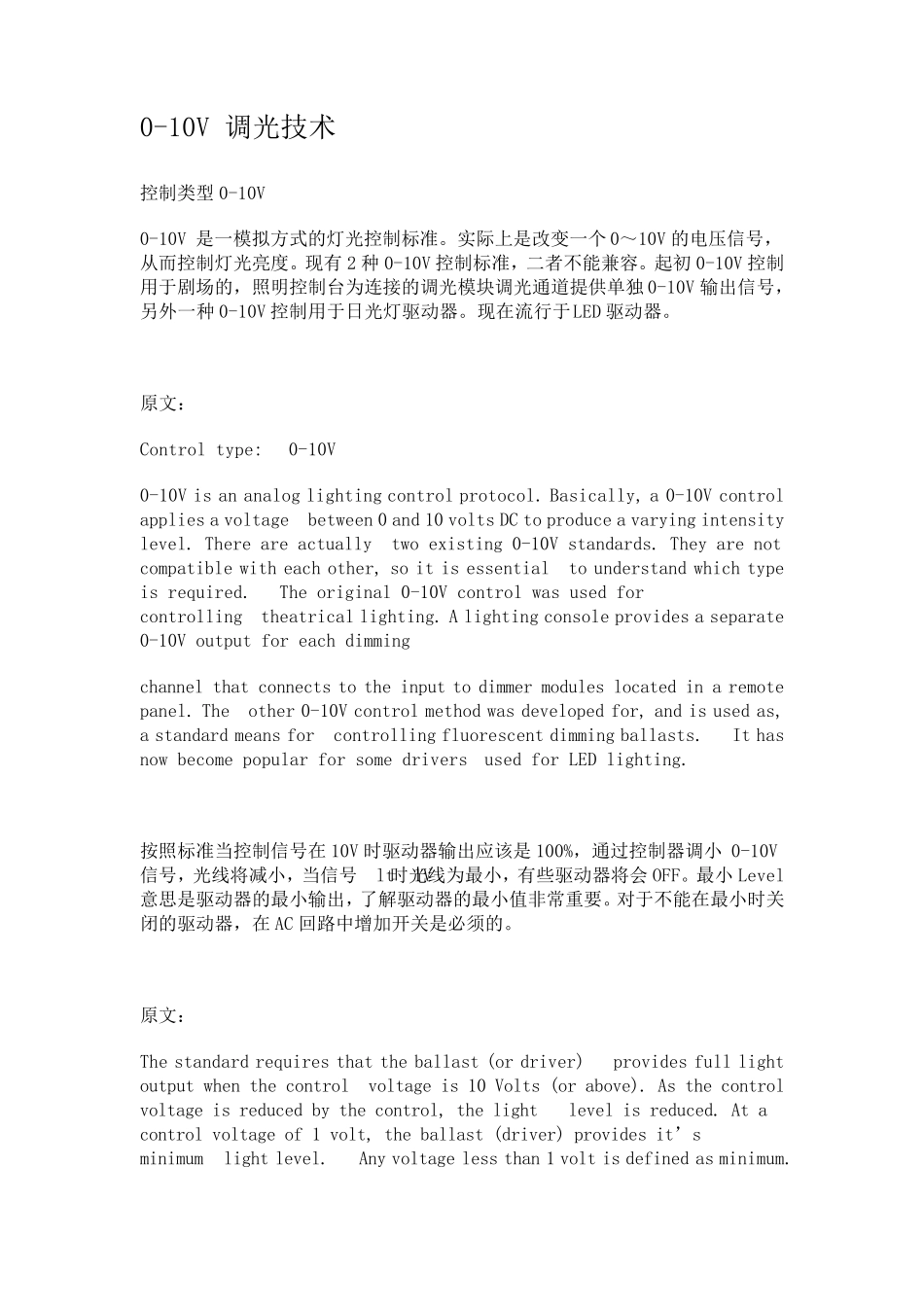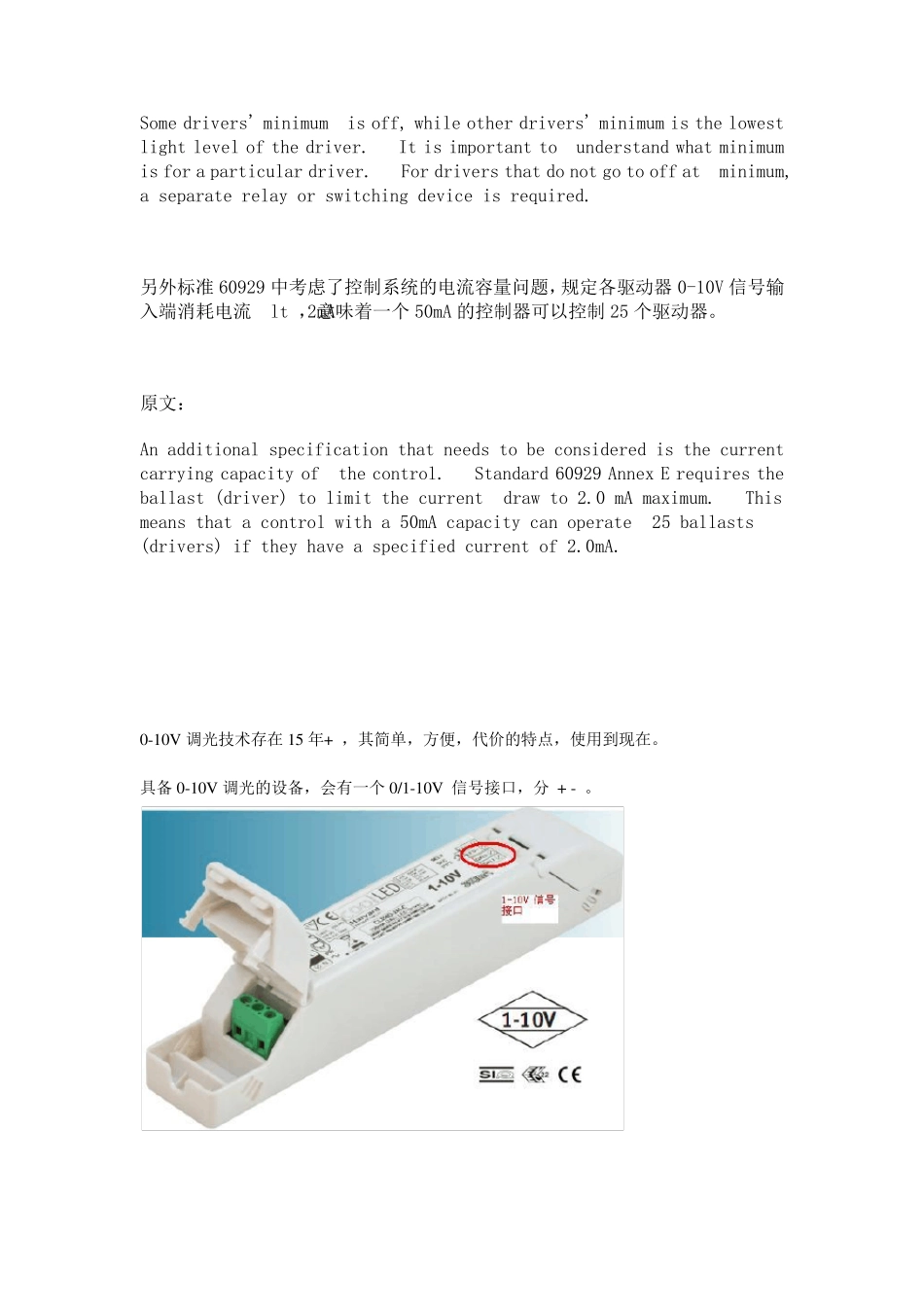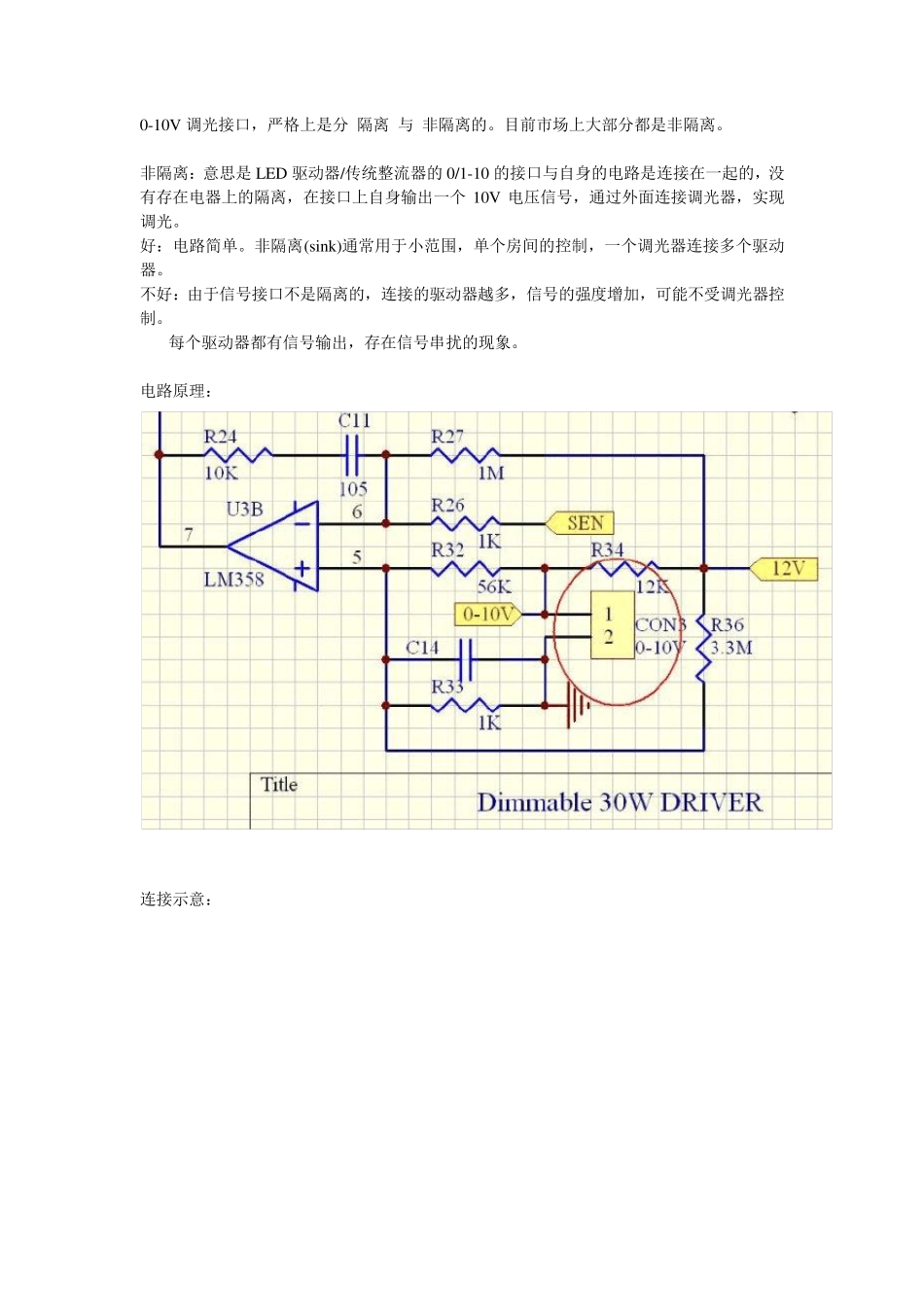0-10V 调光技术 控制类型0-10V 0-10V 是一模拟方式的灯光控制标准。实际上是改变一个0~10V 的电压信号,从而控制灯光亮度。现有2 种0-10V 控制标准,二者不能兼容。起初0-10V 控制用于剧场的,照明控制台为连接的调光模块调光通道提供单独0-10V 输出信号,另外一种0-10V 控制用于日光灯驱动器。现在流行于LED 驱动器。 原文: Control type: 0-10V 0-10V is an analog lighting control protocol. Basically, a 0-10V control applies a voltage between 0 and 10 volts DC to produce a varying intensity level. There are actually two existing 0-10V standards. They are not compatible with each other, so it is essential to understand which type is required. The original 0-10V control was used for controlling theatrical lighting. A lighting console provides a separate 0-10V output for each dimming channel that connects to the input to dimmer modules located in a remote panel. The other 0-10V control method was developed for, and is used as, a standard means for controlling fluorescent dimming ballasts. It has now become popular for some drivers used for LED lighting. 按照标准当控制信号在10V 时驱动器输出应该是100%,通过控制器调小 0-10V 信号,光线将减小,当信号<1V时光线为最小,有些驱动器将会OFF。最小Level意思是驱动器的最小输出,了解驱动器的最小值非常重要。对于不能在最小时关闭的驱动器,在AC 回路中增加开关是必须的。 原文: The standard requires that the ballast (or driver) provides full light output when the control voltage is 10 Volts (or above). As the control voltage is reduced by the control, the light level is reduced. At a control voltage of 1 volt, the ballast (driver) provides it’s minimum light level. Any voltage less than 1 volt is defined as minimum. Some drivers' minimum is off, while other drivers' minimum is the lowest light level of the driver. It is important to understand ...


